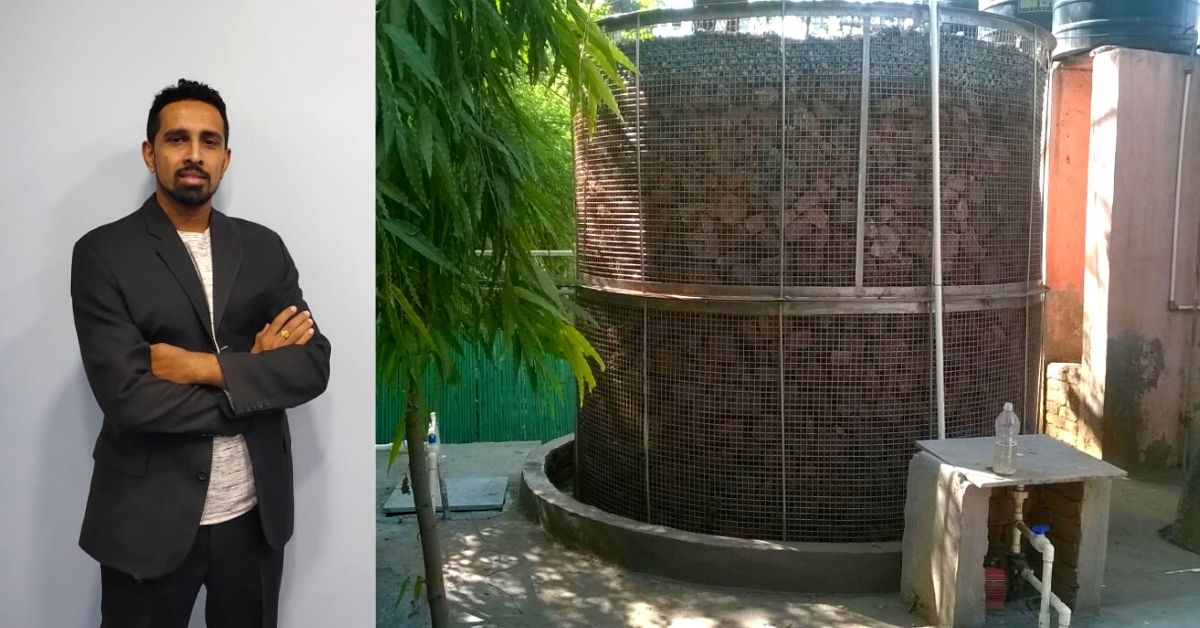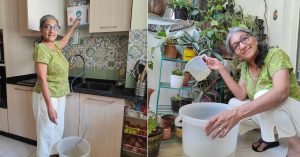How IIT-B’s Zero-Chemical Tech to Treat Wastewater Is Impacting Millions!
With no odour and minimal maintenance, this tech has reduced water demand by 50% in water-stressed communities! #LiveGreen #Innovation

How often do we acknowledge the importance of water? I, for one, have always considered it a resource that is easily available. The north-east, where I belong, has always received enough rainfall, shielding me from the apparent water scarcity.
But of late, news reports of depleting groundwater sources, failing agriculture and scarce rainfall show that water crisis across the world is real. The United Nations published the World Water Development Report, which highlighted this and stated that at least two billion people live in countries that are experiencing high water stress.
Now that we know how grave this problem is, what can be a possible solution?
One that comes to mind is wastewater treatment. This fulfills twin objectives of recycling water for use without further depleting existing reserves, while also preventing it from contaminating water bodies.

Vision Earthcare, a company, founded in December 2004 in Mumbai, is using a unique method to recycle wastewater like sewage and industrial waste. They have been using Soil Bio-technology which was first developed at IIT-Bombay under Prof H S Shankar.
Vision Earthcare’s innovation is called ‘CAMUS-SBT’ (Continuous Aerobic MultiStage Soil Bio-Technology).
“In water-stressed communities, we have been able to reduce water demand by 50 per cent,” says Chandrashekar Shankar, the CEO.
They have installed about 120 of their wastewater treatment systems (or STPs) across the country. Until now, they have recycled about 120 megalitres per day (MLD) which has impacted about 1.2 million people across India!
How the technology works

Usually, three kinds of technologies are used in the treatment of wastewater. The first is the anaerobic technique, where the absence of oxygen helps microorganisms convert organic matter into biogas.
In the aerobic technique, oxygen is pumped into the water through a compressor or a blower. “Here, bubbling is the process where oxygen is pumped, and then the filter removes the suspended particles,” explains 40-year-old Chandrashekar.
The last is the absorptive technique, where organic pollutants are removed using activated carbon.
“The solutions in the market are a combination of these techniques. In the aerobic technique, however, there is a lot of energy consumption as oxygen needs to be pumped using electricity. This can lead to high costs of operation,” explains Chandrasekar.
In CAMUS-SBT, a mix of aerobic and the absorptive technologies have been implemented. The wastewater is made to pass through a column which contains a soil-like medium, which is treated to support the treatment of wastewater. The soil-like composition has three major elements–hard murrum, laterite and clay bricks–all of which are bio-active. Once the water passes through the column, it is ready to be used.

This soil-like mixture supports the growth of bacteria that is beneficial for the treatment of sewage and greywater. It also creates a natural ecosystem where it generates its own oxygen, eliminating the need for a mechanised aeration process.
CAMUS-SBT consumes one-third of the energy consumed by conventional technologies. There is no need for chemicals in the purification process, nor does it release any odours or bio-sludge. Moreover, there is minimal cost of operation and maintenance.
“In case of wastewater that was too contaminated, we tell the users to be careful of contact with skin. This water can be used for purposes like flushing, in cooling towers in structures like malls, and construction sector among others,” he explains.
The inception of the technology

The technology was first introduced in homegrown research in IIT Bombay in the 1980s by Prof H S Shankar, who was teaching Chemical Engineering at the university. He worked on further improving this technology with Bachelors, Masters and PhD students, along with other researchers. The first proof of concept came out in 1993, and the pilots were conducted in the same year at the Indira Gandhi Centre in Borivali to showcase how soil can be used to treat water.
Chandrashekhar, who heads Vision Earthcare now, was a student at IIT Bombay. He joined the prestigious institute in 1997 to pursue a B(Tech) degree and has been involved with the research ever since.
Later, in 2001, he went to the US to complete his PhD in Material Sciences. Then, he also pursued a Postdoctoral degree in Petroleum and Chemical Engineering in the water sector. During this time, the Indian patents were filed, and the company finally came to be founded by Prof H S Shankar in 2004.
All this time, he had collaborated with Prof H S Shankar on small projects remotely, while also working as a teaching assistant at the University of Michigan. He finally took over as the CEO of the company in 2010.
Important projects and plans for the future

Vision Earthcare has installed its STPs in large scale industries, hospitals, schools, Municipal Corporations, townships, apartment complexes, and even individual homes.
The first large plant was set up for the Bombay Municipal Corporation (BMC) in Worli in early 2005. “About 800 MLD of sewage was being dumped into the Arabian Sea, and hence the corporation wanted us to install a plant for them to prevent the pollution,” says Chandrasekhar.
The plant has a capacity of 3 MLD and the recycled wastewater is now provided to the Wellington Sports Club, and Mahalaxmi Race Course. This water is used for central cooling in the premises and irrigation in horticulture.
The cost of installing this technology depends on the capacity and the number of people it would cater to. “In a day, one person generates about 135 litres of wastewater. Depending on that, the wastewater treatment plants are designed and installed,” says Chandrasekar.
Municipal plants with a capacity of 1 MLD and catering to about a 1,000 people costs anywhere between Rs. 1.5-2 crore. They have installed large plants across Gujarat, Maharashtra, Karnataka, and Andhra Pradesh.

SBT has been recognised as one of the best technologies by the Ministry of External Affairs, GoI, acknowledged by NABARD for rural sanitation along with other recognitions!
You May Also Like: Mumbai Man’s Eco-Recycling of Greywater Helps 200 Villages End Water Scarcity!
So, what does Chandrasekar hope for the future?
“I hope that people recognise and understand how efficient this technology is. The population of the country is 133.92 crore. Even if we can reach and impact ten per cent of them in the next five years, it will be an amazing feat,” says the CEO, signing off.
To know more, write to the team at [email protected].
(Edited by Shruti Singhal)
Like this story? Or have something to share?
Write to us: [email protected]
Connect with us on Facebook and Twitter.
This story made me
-
97
-
121
-
89
-
167
Tell Us More
If you found our story insightful, informative, or even just enjoyable, we invite you to consider making a voluntary payment to support the work we do at The Better India. Your contribution helps us continue producing quality content that educates, inspires, and drives positive change.
Choose one of the payment options below for your contribution-
By paying for the stories you value, you directly contribute to sustaining our efforts focused on making a difference in the world. Together, let's ensure that impactful stories continue to be told and shared, enriching lives and communities alike.
Thank you for your support. Here are some frequently asked questions you might find helpful to know why you are contributing?



















